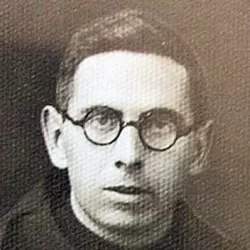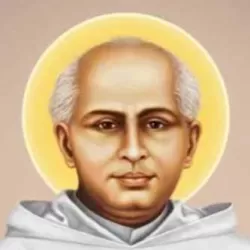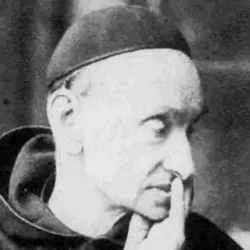The following article on St. Teresa’s experience with mental prayer is based on notes from the first presentation given at the Bay Area Regional Day of Recollection, 20 April 2024, by Father Mark Kissner, OCD. (House of Prayer, Napa, CA)
Teresa of Ávila and Her Experience of Mental Prayer
When we speak of “Teresian Prayer” we’re speaking about mental prayer. In many prayer disciplines, prayer is described in terms of a method that can be used to accomplish a desired end (communication with God). For example, we are told how to do it, why do it, and what to expect.
One common approach, the Dominican method described by Antonio Royo, O.P., lists the following phases of a prayer session:
-
Intro or preparation for prayer
-
Reading, usually of a scripture passage
-
Meditation or imagining details of the scripture scene
-
Reflection on what you have imagined
-
Colloquy or a back-and-forth conversation with God
-
Conclusion consisting of thanksgiving, oblation and promises to reform, petitions, etc.
That’s all good if you intend to approach prayer as a process. Teresian prayer, however, is not about a method. It is about an encounter with a person...an encounter of love. In chapter 8 of Way of Perfection, Teresa describes prayer is an “encounter” not a process. “We need no means to go in search of God, but only to find a place where we can be alone with him and look on his presence.”
Three Principles of Mental Prayer
According to Teresa, mental prayer involves three principles:
-
Be searching for God and desiring to be alone with him. “What are you looking for?” is a question Jesus asks in John 1:38 to two men who are following him. He is asking you the same question.
-
We must be willing to be alone with him. That’s tough in this day and age. There are so many noises. We must work against the current.
-
We must look upon our Lord who is present within us. He’s right here. Find a room where you can be alone and look inside yourself.
These three steps go right to the heart of what’s important.
1. Searching for God.
If you don’t have the experience of God’s love, you will find it difficult to search for him. If you are convinced that he cares for you, you will have the courage to love him in return. You will be eager to find “he who lies within you” and is always waiting for you there. Other forms of prayer (intercession, petition, etc.), don’t rely on love of God. They can be done apart from love of God. Many forms of prayer are made up of habits and repetitions. There’s no encounter there. But mental prayer allows you to realize that God loves you. God is in you. Don’t leave him alone there. Be willing to seek him out. Teresa lived a very dry, superficial 18 years before she recognized that God was within her. Mental prayer is our “yes” to God’s invitation to drink living water!
2. Be willing to spend time with God alone.
In Teresa’s work “Interior Castle” there are seven mansions and the door to each mansion is prayer. When we stop praying, we close the door to his love. In any relationship — be it marriage or friendship or parenting — you must spend time with the other person if your relationship is to grow. Make a habit to spend time with God daily! We are in a spiritual battle...the life of the spirit vs. the pleasure of the senses. Our weapon is prayer.
During the first 18 years of her vocation, Teresa wanted God but was unable to give up her habits and selfishness to get to him. This battle lasted years. When she finally surrendered, that’s when she became Saint Teresa. Mental prayer plunged her into sainthood. All you need to become a saint is love and perseverance.
Bottom line: Love is at the root of mental prayer.
It may not feel good to give up your comforts, but you show up despite your feelings. You finally are loved by Love itself! Love is self-donation. Don't base your “success” on consolations or how you feel about the time you spend in prayer. Love exists not in our own happiness but in choosing to please God in everything. It’s not what we get out of our time in prayer but what we put into it.
If you want to pray well, pray much. If you don’t pray much, at least pray regularly and you will pray well.
Antonio Royo, O.P.
Eliminate sterile activities, activities that keep you treading water rather moving toward God. When you are dry or burdened by darkness, go to be alone with God. It is the will to be alone with God that is the difference between true authentic prayer and the illusion of prayer. Love of God forms the habit of prayer. Love allows us to choose God rather than ourselves. Spend time with the Lord because you love him, not because you get anything out of it. Attachment to God and detachment from ourselves is what defines our prayer.
3. Simply look upon God.
Simply look upon God present in your soul. In Teresa’s books you won’t find a long list of steps or a method for prayer. It is simply looking at Him in prayer. Give your full attention to the Divine Guest who lives in your soul. This requires only a simple look of lingering love. Enjoy each other’s presence. It’s good to talk to God, but ultimately he wants to move you to that “silent gaze.” Prayer is a person-to-person contact. It’s not thoughts and feelings and reflections. It’s making contact with God and, inspired by love, you should show up. How you love is the measuring stick of your prayers.
- Express an act of love first
- The sense of his presence becomes more apparent
- Loving union with the living God is the goal
- Discover that he is within you, present there in you
- Gaze upon him who loves you











